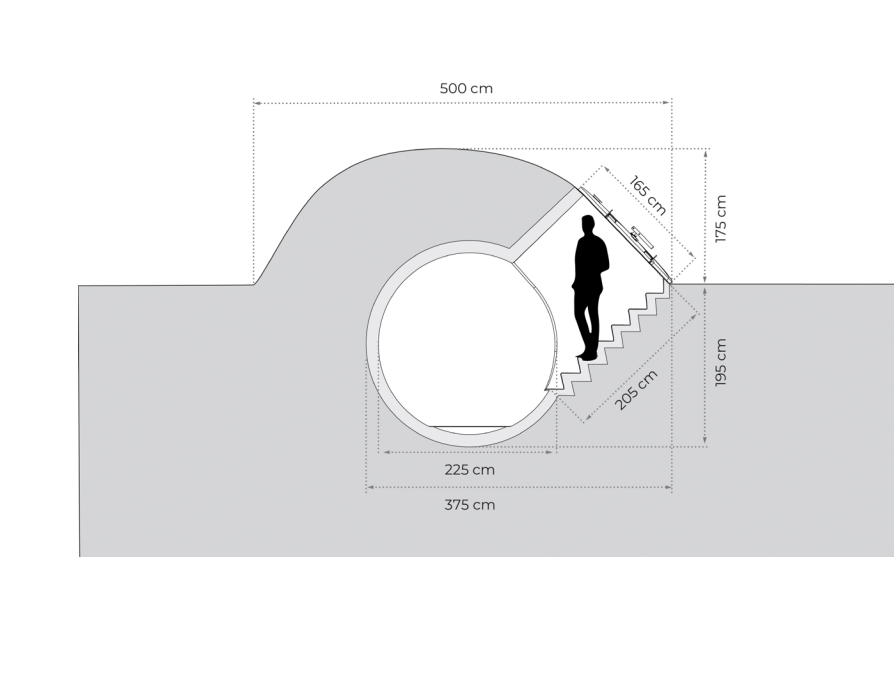Criticisms and reflections
The website reports “A refrigerator in the kitchen? Too easy. It’s more fun to grab a bag or basket, get out of your little house, and do your grocery shopping at your Groundfridge”.
But on a rainy day perhaps the convenience of a classic indoor fridge is more appealing. Proposing Groundfridge as a fun alternative to the traditional fridge can be misleading, as it excludes a variety of other factors when comparing the two different alternatives.
For example, an important element to take into account when discussing Groundfridge, is that the temperature of the underground refrigerator is determined by the type of soil, the presence of groundwater, and, in general, the surrounding climatic conditions.
The internal temperature corresponds to what is measured one meter underground: the layer of earth – about one meter thick – that covers the capsule acts as a natural insulator and maintains a stable internal temperature between 6 and 12 degrees celsius. The more vegetation present, the greater the insulation.
In order to overcome these temperature fluctuations and make it as stable as possible, it is necessary in each case to activate ventilation systems that take advantage of night air, made cooler through inhalation systems, or external cooling systems that use solar energy. But then from an energy point of view, considering also the significant cost of installation, what is the advantage over a regular indoor refrigerator powered by renewable energy?
Floris Schoonderbeek, product designer and developer, presents the product as usable “whether you live in the city or out of town“, but given the required land space – 25 m² – it is difficult to imagine large-scale private use of the system in territories with high population densities, such as an urban setting. It cannot be a substitute solution for the traditional refrigerator for each household. More likely is the application in out-of-town housing contexts. Only people who own gardens, or businesses in the food service sector, such as restaurants and agritourism complexes for additional food storage space.
All quiet on the refrigeration front?
The concept of the wine cellar for storing food, or particularly wine, is not new: think of the apothecary (storeroom) of the ancient Romans for storing wine, to today’s wine cellars for wine production; ice houses, dating back to the Bronze Age and used in ancient Persia, from which the Romans took their cue for keeping food cool for banquets – all the way to today’s refrigerators.
In short, it could be said that the innovation is in design rather than concept.
One point that may be interesting, however, is the different approach to storing food for private or family use: Schoonderbeek points out that “people are growing food collectively […] learning about where the food we consume comes from, trying to self-produce it […] People in the city are also starting to grow their own food, rooftop gardens, urban farmers and this whole range of activities are an example of this – I think Groundfridge can contribute to this chain”. We also covered these issues in the article Making a garden without having a garden and Rethinking Grocery Shopping.
In an urban context, Groundfridge could lead to a vision of collective household refrigerators: a cellar for collective use, e.g. located in the inner garden of a housing complex, supporting, not replacing, private refrigerators in individual homes.
It could thus be an additional building block in support of a broader discussion about a different way of thinking about food, community, responsibility and habit in food waste.








